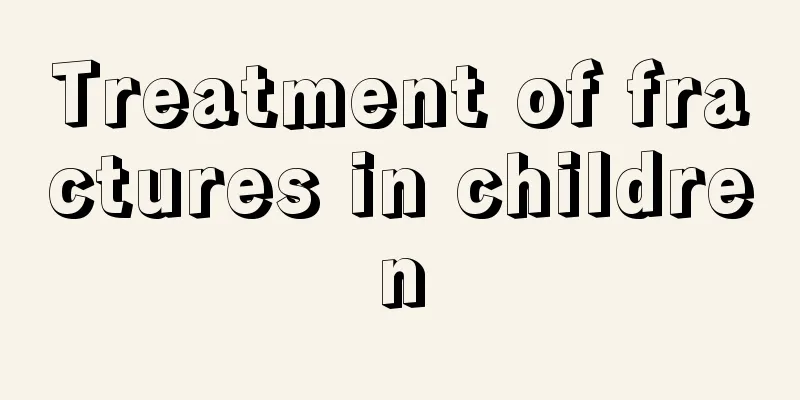How to tell if rotavirus is cured

|
There are many reasons why children are prone to fever, vomiting, and diarrhea, one of the more typical reasons being rotavirus infection. The symptoms caused by rotavirus will last for about 10 days, and the impact on children can be imagined. Rotavirus can be cured, and as a parent we are very concerned about our children’s recovery performance. So, how do you determine if rotavirus is cured? Now let’s take a look at how to make the judgment. Soft tissue viral enteritis is a self-limiting disease. As long as the symptoms improve, the mental state is good, and the eating habits are the same as normal, it means that the disease is cured. Rotavirus symptoms Rotavirus diarrhea can range from asymptomatic, mild illness to severe illness with life-threatening gastroenteritis, dehydration, and electrolyte imbalance. Symptoms of rotavirus diarrhea include fever, vomiting, abdominal pain, and bloodless watery diarrhea. The diarrhea is white rice soup-like or yellow-green egg drop-like watery stool with a foul odor and does not contain blood or mucus. Symptoms may last 3-9 days. In addition to gastrointestinal symptoms, recent studies have found that rotavirus can cause many other diseases. In some cases, liver function damage may occur to varying degrees. Rotavirus can even pass through the gastrointestinal barrier and cause viremia. How to care 1. Severe cases require medical attention Children with severe diarrhea and dehydration symptoms should go to a children's hospital for diagnosis and treatment in a timely manner, and should be hospitalized or receive intravenous treatment if necessary. 2. Do not take antidiarrheal drugs Like other types of diarrhea, infants and young children suffering from autumn diarrhea should not take adult antidiarrheal drugs, as this is very dangerous for them. For example, autumn diarrhea is caused by rotavirus infection. Taking antibiotics is not only ineffective, but also disrupts the growth of normal intestinal flora. 3. Adjust your diet As long as there is no severe vomiting, most children do not need to fast. Children with severe vomiting need to fast for 4-6 hours before gradually increasing their feeding. Appropriately reduce the number of feedings, feed sugar and salt water, and reduce the burden on the gastrointestinal tract. 4. Prevent dehydration The child should be given more water (mainly boiled water) in small amounts and multiple times. When a child has symptoms of dehydration due to frequent diarrhea, or has been diagnosed with mild or moderate dehydration, he is generally given oral rehydration salts. For moderate or severe dehydration or vomiting and diarrhea, intravenous infusion is required. These measures can promptly correct dehydration, electrolyte and acid-base imbalances. 5. Protect your hips The child's buttocks should be cleaned after each bowel movement to prevent diaper dermatitis, and then some oily ointment should be applied to prevent the child from getting a "red buttocks" due to being soaked in feces and urine. 6. When the child resumes eating, he can be fed rice soup or diluted milk. After the condition is under control, when you start to resume normal eating, you should pay attention to the gradual transition from liquid to semi-liquid food and then to soft rice. 7. Children with autumn diarrhea should rest and avoid going to crowded places such as public places as much as possible. Keep the indoor air fresh and well-circulated to reduce the chance of viral infection. Children should avoid going to nurseries and other public places to avoid infection. 8. Children with diarrhea should be isolated Parents should wash their hands carefully before and after caring for their children to prevent cross infection, keep them clean and avoid secondary infection. At the same time, disinfection should also be done well. All items used by the sick child (diapers, clothes, toys, books, etc.) should be thoroughly cleaned and disinfected to prevent infection. |
<<: How to cultivate children's imagination
>>: The harm of waist stool to baby
Recommend
How to treat sinusitis in teenagers?
When teenagers suffer from sinusitis, they will k...
How much water should children drink every day
Water is a substance that people must consume in ...
Treatment of hip synovitis in children
We all know that every child is lively and emotio...
Is it true that talcum powder is harmful to babies?
In the past, talcum powder was one of the must-ha...
How to deal with a child who has a fever and cold limbs?
Children have very poor physical constitutions. I...
Symptoms of malnutrition in children
What are the symptoms of malnutrition in children...
Symptoms of constipation in newborns
Constipation in newborns is a relatively common s...
How to prevent and treat acute suppurative tonsillitis in children
Acute suppurative tonsillitis in children is a ve...
How to check your child's intelligence
Although many parents hope that their children ar...
What to do if your 2-year-old baby has vomiting and diarrhea
For babies, their bodies are in a critical period...
Why do most people who get leukemia are children? Parents must watch
Who caused the child to have leukemia? Don't ...
What happens if your baby has high jaundice?
Every newborn will have symptoms of jaundice. The...
Can mentally retarded children be cured?
This will affect the child's life, and may ev...
How much milk should a newborn baby drink?
The growth and development of newborns is an issu...
How to do abdominal breathing for children
Abdominal breathing is a very good physical breat...









